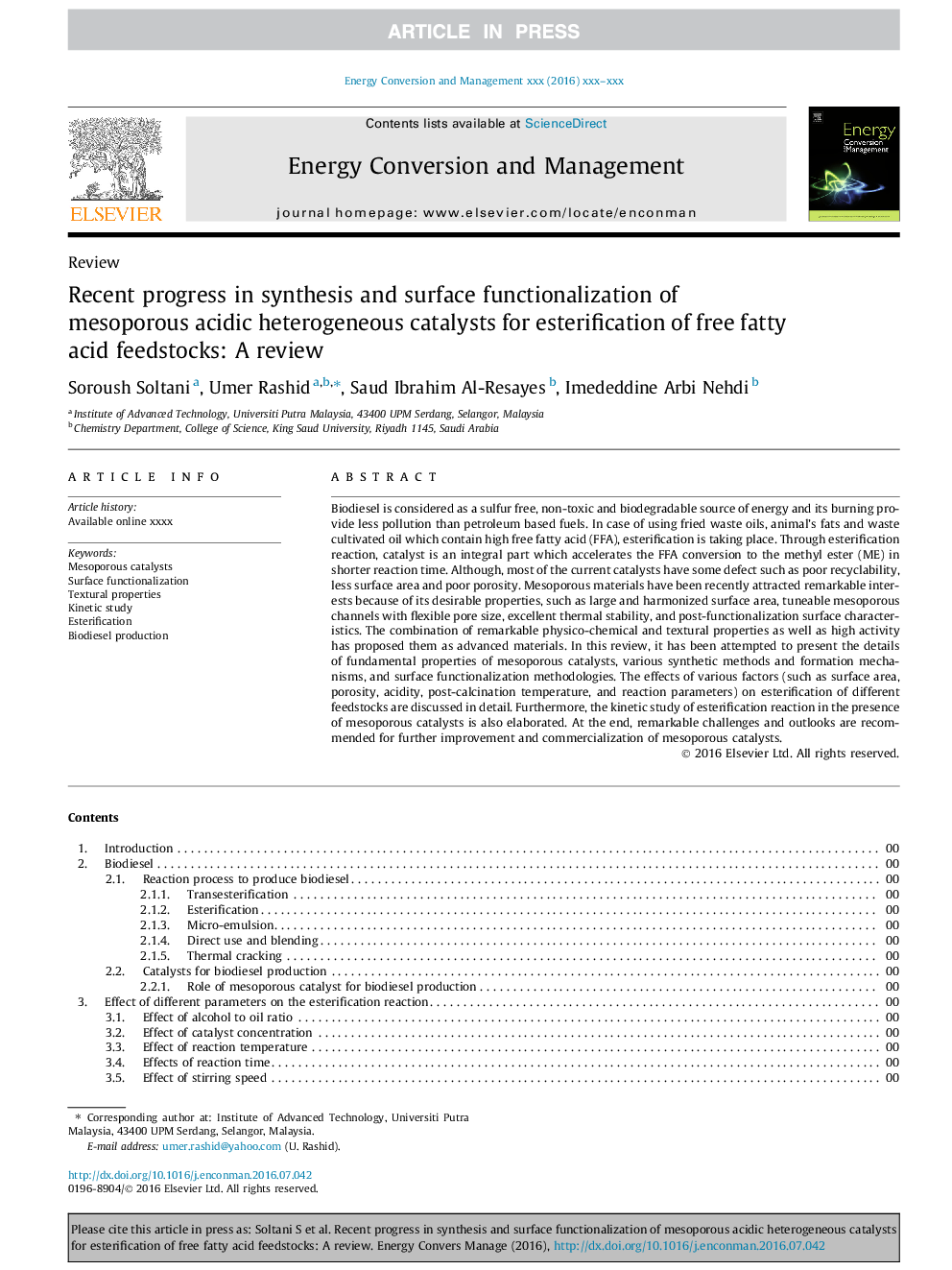| Article ID | Journal | Published Year | Pages | File Type |
|---|---|---|---|---|
| 5012696 | Energy Conversion and Management | 2017 | 23 Pages |
Abstract
Biodiesel is considered as a sulfur free, non-toxic and biodegradable source of energy and its burning provide less pollution than petroleum based fuels. In case of using fried waste oils, animal's fats and waste cultivated oil which contain high free fatty acid (FFA), esterification is taking place. Through esterification reaction, catalyst is an integral part which accelerates the FFA conversion to the methyl ester (ME) in shorter reaction time. Although, most of the current catalysts have some defect such as poor recyclability, less surface area and poor porosity. Mesoporous materials have been recently attracted remarkable interests because of its desirable properties, such as large and harmonized surface area, tuneable mesoporous channels with flexible pore size, excellent thermal stability, and post-functionalization surface characteristics. The combination of remarkable physico-chemical and textural properties as well as high activity has proposed them as advanced materials. In this review, it has been attempted to present the details of fundamental properties of mesoporous catalysts, various synthetic methods and formation mechanisms, and surface functionalization methodologies. The effects of various factors (such as surface area, porosity, acidity, post-calcination temperature, and reaction parameters) on esterification of different feedstocks are discussed in detail. Furthermore, the kinetic study of esterification reaction in the presence of mesoporous catalysts is also elaborated. At the end, remarkable challenges and outlooks are recommended for further improvement and commercialization of mesoporous catalysts.
Keywords
Related Topics
Physical Sciences and Engineering
Energy
Energy (General)
Authors
Soroush Soltani, Umer Rashid, Saud Ibrahim Al-Resayes, Imededdine Arbi Nehdi,
